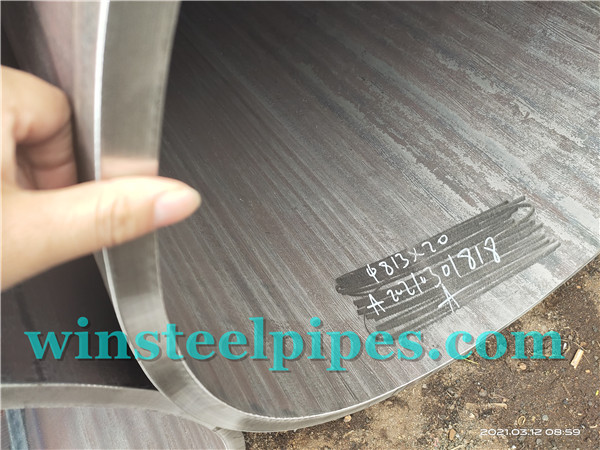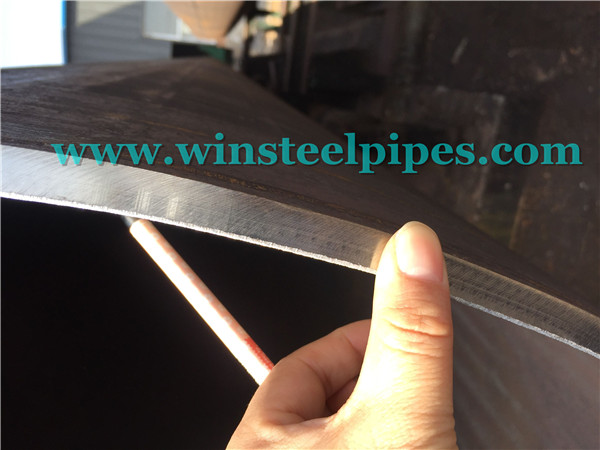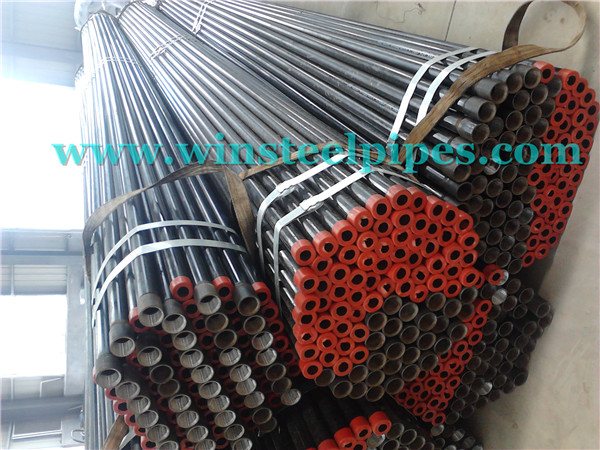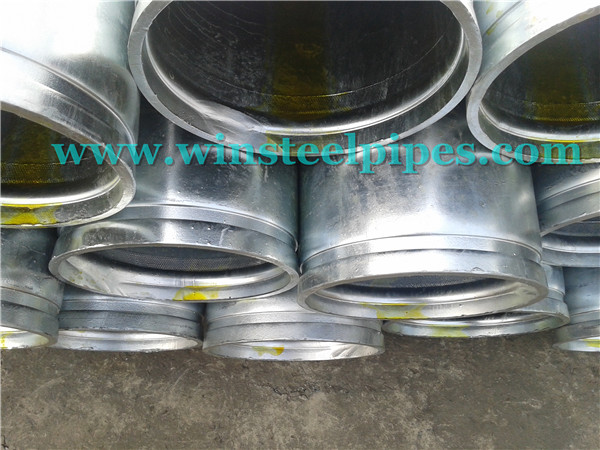There are many types of steel pipe end. Such as plain end, beveled end, threaded, grooved end, bell and spigot, and etc. We could supply all these types of pipe-end according to customers’ requirements.
Grade L175P or A25P PSL1 pipe should furnished with threaded ends. Other grades of PSL 1 pipe should furnished with plain ends. Useless another acceptable end finish specified in the sales order. PSL 2 pipe should furnished with plain ends. LSAW steel pipe end should be free from burrs. API 5L PSL 1 and PSL 2 are different.
The most common types of pipe end connections are:
(1) Plain ends (PE)
ASME ANSI B16.5 PE ends are generally used for smaller diameters. And imply the usage of slip-on-flanges and socket weld fittings. Usually, API 5L PSL 2 required steel pipe end plain.

(2) Chamfer or Beveling or Bevelling ends (BE)
Most of our pipes are chamfer or beveling. Of course, that is according to the customer’s order.
ASME ANSI B16.5 BE ends are the most common type of finish ( joints realized by welding pipes with but weld fittings and flanges). It is the metal pipe end that needs to bevelled. The pipe end beveling or pipe end finishing is a way to get an accurate weld surface as a base before the welding started.

All the words chamfer, beveling or bevelling mean the same making a welding edge preparation. In pipe fabrication, pipes welded together in the offshore industry, oil and gas industry, ship construction, pressure vessels, heat exchanger construction or the boiler and tank construction industries. In all these industries the factories or the workshop need to bevel pipes to get a bevel angle on the metal pipe end. Beveled end angle specified in API 5L. Degree: Very common bevel angles are 30 degrees bevels with tolerance ±5°. Root face: 1.8mm±0.6mm.
(3) Threaded Ends (TE)
Threaded and Coupled Ends (T&C), Generally Used for Gas Distribution. ASME B1.20.1 NPT.TE ends need threaded fittings and flanges and are typical for small size pipelines. For the LSAW steel pipe, pipe size is all not less than 406.4 mm. So it is very hard for steel pipe end to be threaded.

(4) Grooved Ends
We can provide a grooved LSAW pipe end. A grooved mechanical joining of two pipes means that a small groove made at the end of each pipe with a grooving machine. A rubber gasket fitted over the two pipe ends and around it a two-part coupling screwed together with two bolts and nuts. The coupling parts, which designed to fit in the grooves, lock the pipes together and the rubber gasket makes the connection airtight and watertight.

Five Benefits of Grooved Piping System
A grooved piping system is the most versatile, reliable and economical piping system. It is more reliable than threaded or flange connection and often results in a 2x-4x faster installation. The system designed to work with rolled or grooved pipes. Flexible grooved pipe couplings offer the flexibility needed for vibration dampening or installation in earthquake-prone areas.
1) Cost Saving
The grooved piping system offers up to 30% cost saving. It offers fast assembly in the tight system, cleaner system with no welding slag, contamination or hot work permit. More predictable cost estimate for contractors resulting in faster and cheaper installation.
2) Each Joint is a Union
Each pipe joint is a flexible joint and removing the couplings allows removal of pipe for easy cleaning, servicing, and maintenance. It also allows the flexibility to change the piping system and add/remove equipment.
3) Easy Installation with Rolled or Cut Grooved Pipe
Grooved pipe couplings need creating either a rolled groove or a machine cut groove. A rolled groove creates an indentation int the ID of the pipe whereas the machine cut groove is smooth on the ID. Rolled grooved done on thinner wall pipe whereas the machine cut groove is more common on thicker wall pipes. Grooved couplings installed on pipe schedules 5 to schedule 40.
A grooved pipe is much easier than a welded pipe joint, requiring no X-Ray, hot work permit and associated hazards of welding a pipe.
4) Cut Noise and Vibration
Use of grooved pipe coupling isolates the noise and vibration. Resilient gasket absorbs noise and vibration resulting in a quieter system. Provides superior vibration attenuation and eliminates the need for noise suppression devices.
5) Provide Expansion and Contraction
A grooved pipe joint allows for expansion and contraction of the pipe joint without compromising the integrity of the connection. It eliminates the need for costly expansion joints. Grooved pipe joints also eliminate pipe stresses for buried and underground pipes.